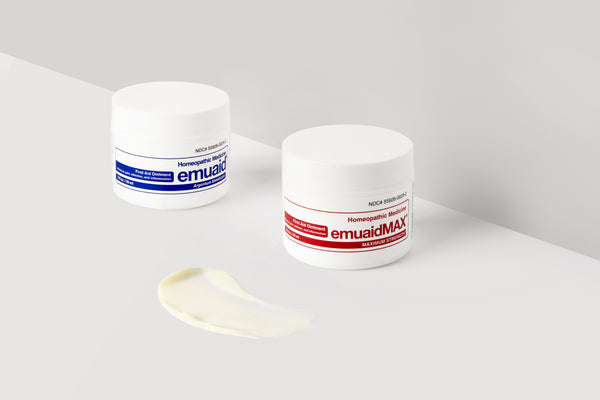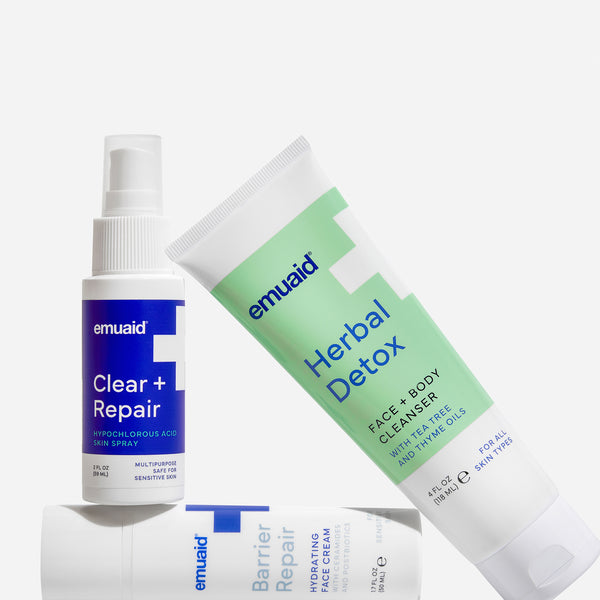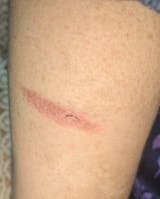Holistic Approach to Managing Shingles: A Comprehensive Guide
How to Care for Shingles
Shingles outbreak, caused by the reactivation of the varicella-zoster virus, is a painful condition that brings frustrating experience. Fortunately, there are ways to manage the condition and alleviate the common shingles symptoms. In this section, we will discuss some care tips and treatments, focusing on topical ointments, to help you find relief from shingles discomfort.
Topical ointments for shingles play a crucial role in pain management and skin care. Three popular options include capsaicin, lidocaine, and calamine lotion. Capsaicin, derived from chili peppers, can help block pain signals, while lidocaine is a numbing agent that can provide temporary relief from pain and itching. Calamine lotion can help soothe the skin and reduce itching.
Natural remedies can also be helpful in treating shingles. Aloe vera gel is a popular choice for its soothing and hydrating properties. Applying aloe vera gel to the affected area can help alleviate itching and promote healing. Another natural option is cool compresses, which can provide temporary relief from pain and itching when applied to the rash.
Pain management is an essential aspect of shingles care. In addition to topical ointments, over-the-counter pain relievers such as ibuprofen or naproxen can help manage mild to moderate pain. For more severe pain, a doctor may prescribe medications like tricyclic antidepressants.
While there is no cure for shingles, proper care and treatment can help manage symptoms and promote healing. It is important to note that healing time varies from person to person, usually ranging from two to six weeks. In any case, it is highly recommended to consult a healthcare professional for a personalized treatment plan and to follow their guidelines.
By adhering to these care tips and treatments, you can effectively manage your symptoms of shingles and work towards a swift recovery. Remember to maintain a clean and comfortable environment, dress in soft, breathable clothing, and use topical treatments as directed to support the healing process.
Topical Shingles Treatment
Shingles, caused by the reactivation of the varicella-zoster virus, can result in a painful rash and require effective treatment. Topical ointments provide a way to manage the discomfort and pain associated with shingles rash. In this section, we will discuss one of the best topical ointments for shingles.
EMUAIDMAX® First Aid Ointment
EMUAIDMAX® First Aid Ointment is a versatile and powerful ointment used for a variety of skin conditions, including shingles rash. The formula is designed to combat infection, reduce inflammation, and provide relief from pain and itching. The natural and effective ingredients in EMUAIDMAX® help address shingles symptoms efficiently.
The key ingredients of the ointment are:
Emu oil: Known for its anti-inflammatory and moisturizing properties, emu oil penetrates deep into the skin to address the pain and discomfort associated with shingles.
Tea tree oil: This essential oil is popular for its antibacterial, and antifungal properties, which can help prevent infection and offer relief to the affected skin areas.
Argentum Metallicum: A homeopathic remedy that promotes wound healing, reduces inflammation, and acts as an antimicrobial agent against various skin infections.
To use EMUAIDMAX® First Aid Ointment for shingles rash treatment, apply it to the affected area 3-4 times per day or as directed by a healthcare professional. The ointment should not be ingested or applied to organs or mucous membranes.
By addressing the pain, inflammation, and discomfort, EMUAIDMAX® First Aid Ointment can support the healing process and provide symptomatic relief for shingles. It is essential to consult with your healthcare provider before starting any new treatment, especially if you have any existing health concerns, chronic health issues or are taking medications for other health conditions.
What is the Most Common Treatment for Shingles
Shingles, a viral infection caused by the reactivation of the Varicella-zoster virus, can be quite painful and discomforting for the affected person. One of the most common treatments for shingles involves the use of antiviral medications, which help reduce the severity and duration of the infection.
In addition to antiviral medications, treatment for shingles can also involve the use of pain-relief medications. Over-the-counter pain relievers like acetaminophen and ibuprofen can be useful in managing the discomfort associated with shingles. However, in some cases, more potent prescription painkillers might be necessary to control the pain.
For topical relief, there are several over-the-counter creams that can help alleviate the itching and pain caused by shingles. Furthermore, A local anaesthetic agent cream available by prescription can effectively target shingles-related nerve pain.
It is essential to start treatment as early as possible, preferably within the first 72 hours of symptom onset, to achieve the best results. Early intervention with antiviral medications can help minimize the risk of long-term nerve pain.
In summary, the most common treatment for shingles consists of antiviral medications, pain relief medications, and topical creams to manage discomfort and itching. Initiating therapy early on can be highly beneficial in reducing the intensity and duration of shingles symptoms.
Over the Counter Remedies for Shingles
Shingles can be managed with various over-the-counter (OTC) creams and medications. These remedies aim to ease the symptoms, reduce inflammation, and help people cope with the pain caused by shingles.
Topical creams can help alleviate the discomfort and itching associated with shingles rashes. It is essential to consult with a healthcare professional before deciding on any OTC cream for shingles, as they can recommend the most suitable product based on a person's unique needs and symptoms.
Apart from creams, OTC medications such as acetaminophen can also assist in managing shingles pain. It is crucial to follow the directions on the package and take the medication only as directed to avoid potential side effects or complications.
Various over-the-counter remedies are available to help manage shingles symptoms, from creams and lotions to other medications. By combining these remedies with proper skin care techniques and home remedies, people can effectively cope with shingles flare-ups and find relief from the discomfort.
Alternative Remedies for Shingles
While antiviral medications are the primary treatment options, there are also alternative remedies for managing shingles symptoms. In this section, we'll explore natural treatments that can be used in conjunction with medical therapies or as complementary options.
Oatmeal baths is a natural remedy that can help ease the skin irritation by adding colloidal oatmeal or Epsom salt to the bathwater which also provides additional pain relief and comfort.. Daily cleansing of the affected area using a mild soap and warm water can help reduce the risk of infection and promote healing. It's important to gently pat the skin dry after bathing, as rubbing can further damage the skin and aggravate shingles symptoms.
Practicing good skin care is essential for managing shingles pain and discomfort. Dressing comfortably and avoiding tight clothes can help reduce irritation on the affected areas. Applying cool compresses to the rash and keeping the area clean and dry may also help to alleviate pain. Over-the-counter pain relievers, such as ibuprofen or acetaminophen, can be beneficial in reducing inflammation and discomfort associated with shingles.
While there is no definitive holistic cure for shingles, some studies suggest that certain supplements and natural remedies may be helpful in improving immune function and reducing the severity of symptoms. These include vitamin C, zinc, and licorice root extract.
It's crucial to remember that although alternative treatment options may provide relief from shingles symptoms, they should not replace medical treatments prescribed by your healthcare provider. Always discuss any complementary therapies with your doctor if there's any risk of complications to ensure the most appropriate and comprehensive care for your specific condition. If you experience any allergic reactions, seek immediate medical attention for prompt and appropriate treatment.
Natural Ways to Treat Shingles
The painful skin rash caused by shingles can be an extremely uncomfortable condition. While prescription medications are often recommended to help manage shingles pain and hasten healing, there are also natural treatments available that can provide relief and support faster recovery process.
One popular natural remedy for shingles is the use of healing baths. Daily cleansing can help reduce the risk of spreading the infection and soothe the skin. Taking a cool bath or showering in cold water eases the pain caused by shingles.
Another effective method for alleviating shingles discomfort is the application of cold compresses on the affected area. Applying a cool, clean cloth directly to the skin can help to numb the area and reduce inflammation. Cold compresses should be used for 20 minutes at a time, with at least an hour break in between applications to avoid overcooling the skin.
Lastly, certain dietary and herbal remedies can aid in the recovery process. For example, consuming foods rich in antioxidants, like fresh fruits and vegetables, can help boost the immune system and fight off the virus. Moreover, some individuals find relief through the use of herbal supplements such as lysine, lemon balm, and licorice root. However, it is crucial to consult with a healthcare provider if there is any medical attention needed.
In conclusion, shingles can be a painful experience, but various natural treatments can provide relief and support the healing process. Incorporating these remedies, along with medical treatments, may help individuals manage their symptoms and improve their overall quality of life.
Should You Exercise with Shingles
In the initial stages of shingles, you might experience pain, fatigue, and flu-like symptoms. It's often advised to avoid strenuous exercise during this time, as it may worsen your symptoms. Rest is essential, and light physical activity such as stretching or gentle yoga might be more appropriate.
As the shingles rash progresses and the itching and pain become more intense, refrain from activities that might irritate the rash or cause excessive sweating. Loose clothing and proper skincare can help provide some relief, but vigorous exercise could exacerbate the discomfort and prolong the healing process.
In the later stages of shingles, when the blistering skin rash have dried and formed scabs, it's crucial to avoid picking them blisters or engaging in activities that might cause them to break open. An open wound increases the risk of infection and scarring, so it's essential to let the scabs heal naturally.
Once your shingles rash has cleared and you no longer have any active blisters or open wounds, you can gradually return to your regular exercise routine. It's advised to start slowly and listen to your body, making adjustments as necessary. If you experience pain or any lingering symptoms, consult with your healthcare provider for guidance.
It's worth noting that while exercise is not recommended during the acute stages of shingles, maintaining a healthy lifestyle before, during, and after the infection can help support the immune system and may play a role in preventing the recurrence of the virus. Regular exercise, a balanced diet, and stress management can contribute to overall health and well-being.
In summary, avoid strenuous exercise during the initial stages of shingles, and prioritize rest and gentle movement. As symptoms subside and the rash heals, you can begin to reintroduce your regular exercise routine gradually. Keep your health and comfort as your priority, and consult with a healthcare provider for any concerns or questions.





